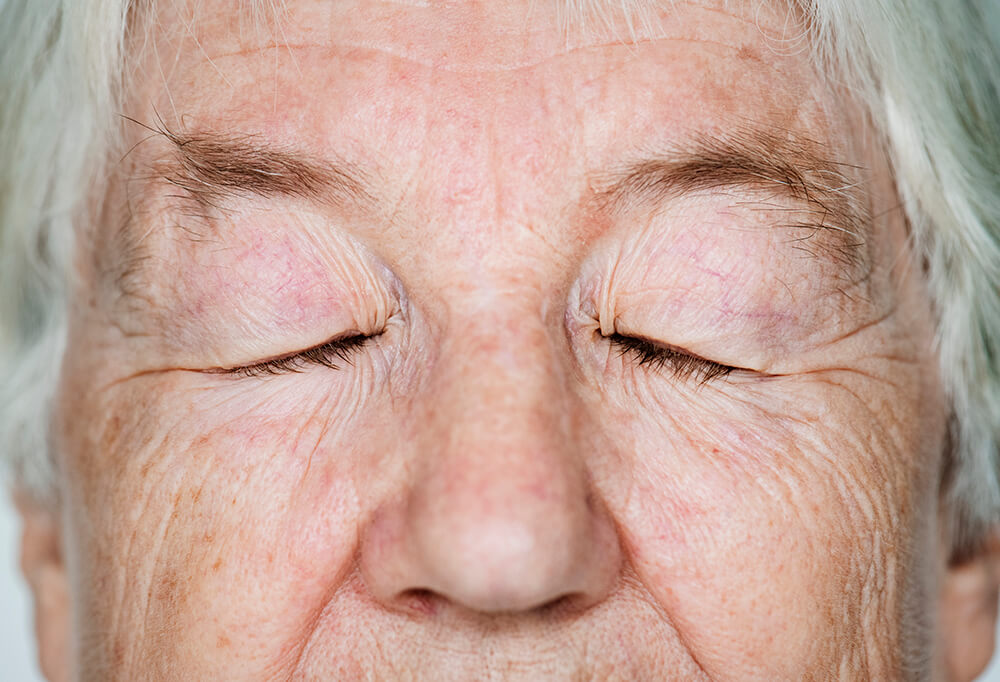Meditating with mushrooms may be the key to reaching the level of meditation that will actually provide you pain relief. Psychedelics have become more and more popular for use in pain management, but their meditative properties is not something often discussed between patients and the doctors who administer them.
When considering pain medication, many people will start by saying, “I don’t want to get high.”
Maybe this is because we, as a society, associate being in an altered mental state as some sort of moral failing, or maybe because the idea of not being in control is a scary thought. I’m going to try to address both of these briefly here, though I think they each deserve their own article.
The focus of this article is why a meditative approach works for me, and how the altered mental state can be helpful for that level of meditation.
Myths about psychedelics
First things first.
Is being “high” really a moral failing? Maybe. I would consider going to work, operating a car, or caring for children in in an altered state to be potentially moral failings. Your cognition, reflexes, and basically everything is altered or diminished.
A similar diminished capacity, though, can be experienced when one is in a state of constant pain, and few seem to feel that’s a moral failing. Similarly, when you’re medicated for a medical procedure, you usually don’t find yourself passing any type of moral judgement on your mental state.
Why pass judgment on the few hours you choose to responsibly set aside to invest in self-care? The key word here, of course, is “responsibly,” and a key point in using psychedelics for pain management is that it is temporary. Investing a few hours per month in meditating in an “altered state” allows me to spend the rest of the time free of pain and clear-headed.
The fear of being out of control during a psychedelic experience may hold more validity. It depends on the individual.
On one hand, one usually isn’t in control while dreaming, and yet few seek to avoid sleeping because of this. Instead, we sleep each night and wake up to find our bodies safe and sound.
Sleep is unavoidable, of course. But how many people get themselves worked up into a knot over the idea of being out of control while they dream?
Being out of control has never really been something I personally found frightening, but it is something I find unpleasant. Everyone has their own personal limits and preferences, and that’s just mine. A psychedelic state is chaotic, but to me there’s nothing more satisfying than bringing subtle order to the chaos and bending it to your will. With practice, you might realize that you are never truly out of control, but rather in a different kind of control. Call it a lucid dreaming of sort.
Taken responsibly, with psychedelics too your body will emerge safe and sound.

A Meditative Approach
In fact, the brain activity observed during a psychedelic trip and the brain activity during master-level meditation are similar. It’s not a stretch of the imagination to assume that meditating with mushrooms is somewhat of a shortcut to deep meditation.
Chronic pain patients are often told to meditate to relieve pain, often to our great frustration. Learning to meditate to a level where you can affect physical changes in the body is difficult and often takes many years of training and practice. (Imagine waiting years for an aspirin to take effect while you are in unremitting pain.) Meditating with mushrooms can make everything much easier.
I am not saying meditation is out of our reach, I would just venture to say it’s probably not within reach of the average person also struggling with the burdens of chronic pain. We don’t get the luxury of pressing pause on things like daily responsibilities, daily pain, and brain fog to take up a rigorous meditation practice requiring years to perfect in order to see a significant return.
That said, we do know that when properly applied, meditation does work for pain management. A variety of peer-reviewed studies have been published on this topic, some of which can be found here.
So what’s the solution? My personal feeling is that there is no shame in just taking the shortcut. As a chronic pain patient, life already handed me some lemons, so I will take whatever shortcut I please in the process of making lemonade and use the mushrooms to help me meditate.
I prefer to take a dose that is enough to make it easy to disengage from the outside world and turn my thoughts inward. I focus on physical sensations and the playlist I chose for the session. With concentration and breathing exercises, I can control the physical sensations and synesthesia creating rushes of different colors across my visual field and waves of “emotion” through my chest in time with the music. (What is a wave of emotion through your chest? That is hard to explain, but just imagine it is something good.)
Cultivating this kind of control took some practice, but it has been very well worth it. I find the pain relief between sessions lasts longer the more intense the meditation session is. I have a particularly nasty headache condition, and I usually get a bit over a week pain free out of each dose.
I would like to write this article pretending to be this perfectly Zen master meditator, but I am not. I’ll be honest: at first it was uncomfortable and exhausting. I even dreaded the start of each session as I might any other exercise routine, except this one was all mental.
I am 100% human with human weaknesses, and one of those weaknesses is occasionally binge-watching series on Netflix. Even after I began to look forward to my meditative sessions, just after dosing one weekend I found out the new season of one of my favorite shows had been released. I was weak, and spent all four hours I should have been meditating watching that show. (This was quite an experience, what with facial features morphing and colors so bright.) I got less than three days of pain-free time out of that dose and vowed never to do that again. This little mishap just confirmed further that this process works best with my full participation.
This brings me to the idea that taking mushrooms for pain is not like taking other medication. You are not just taking a medication for pain, you are meditating with the mushrooms, using them to enhance your meditation ability. This is something that requires your full participation, physical and psychological. I like to think of them as “performance-enhancing drugs,” but for meditation. Just as with any other performance-enhancing drug, they do not really work unless you engage in the activity that’s being enhanced. It wouldn’t matter how many steroids Lance Armstrong took; he wouldn’t have won any races if he stayed on the couch.
With this logic in mind, maybe you can see why psychedelics used in a recreational sense might not have the same impact as if they were used with intent. They might also not have the same impact if they were used with intent to treat pain, but without fully engaging in the experience.





